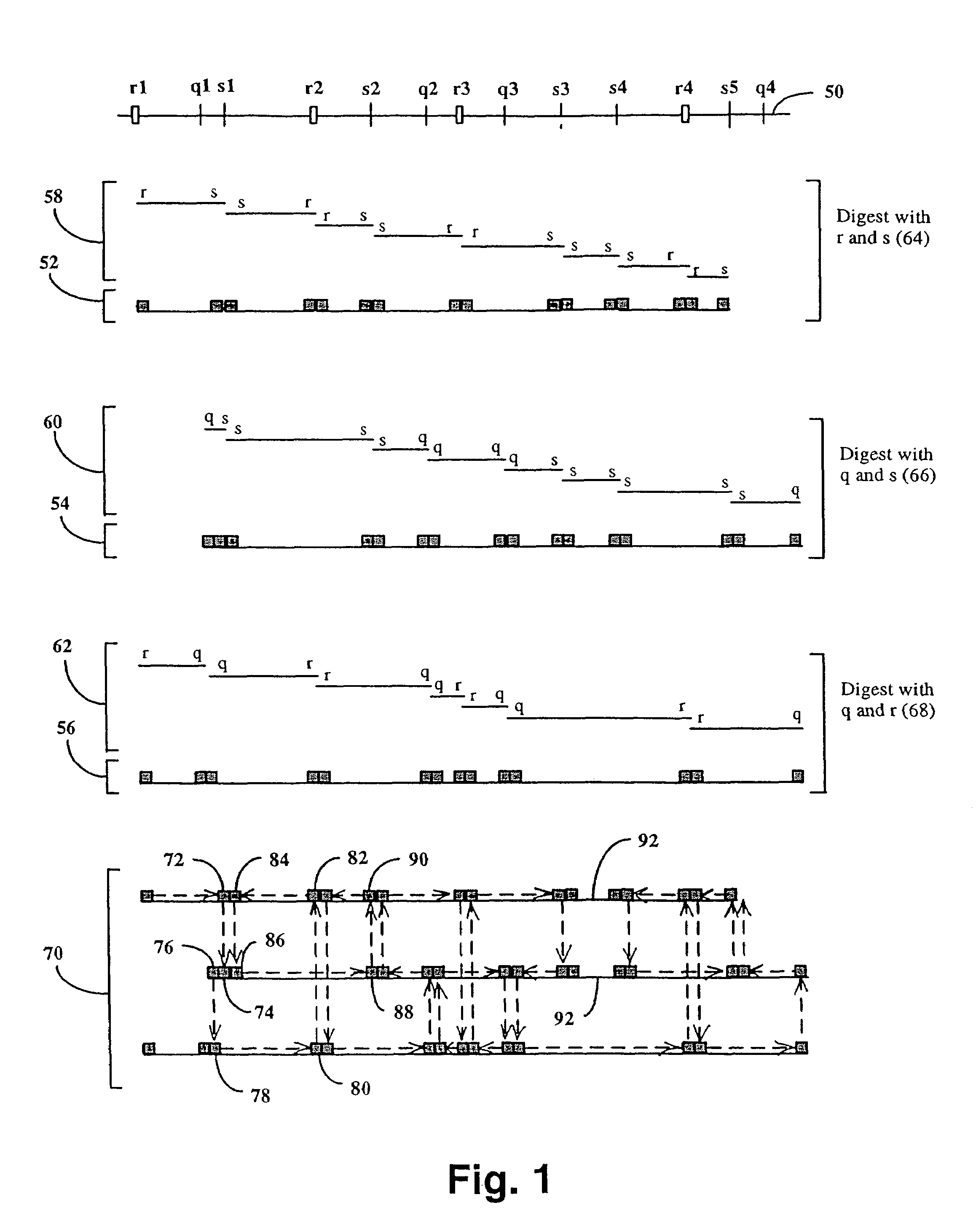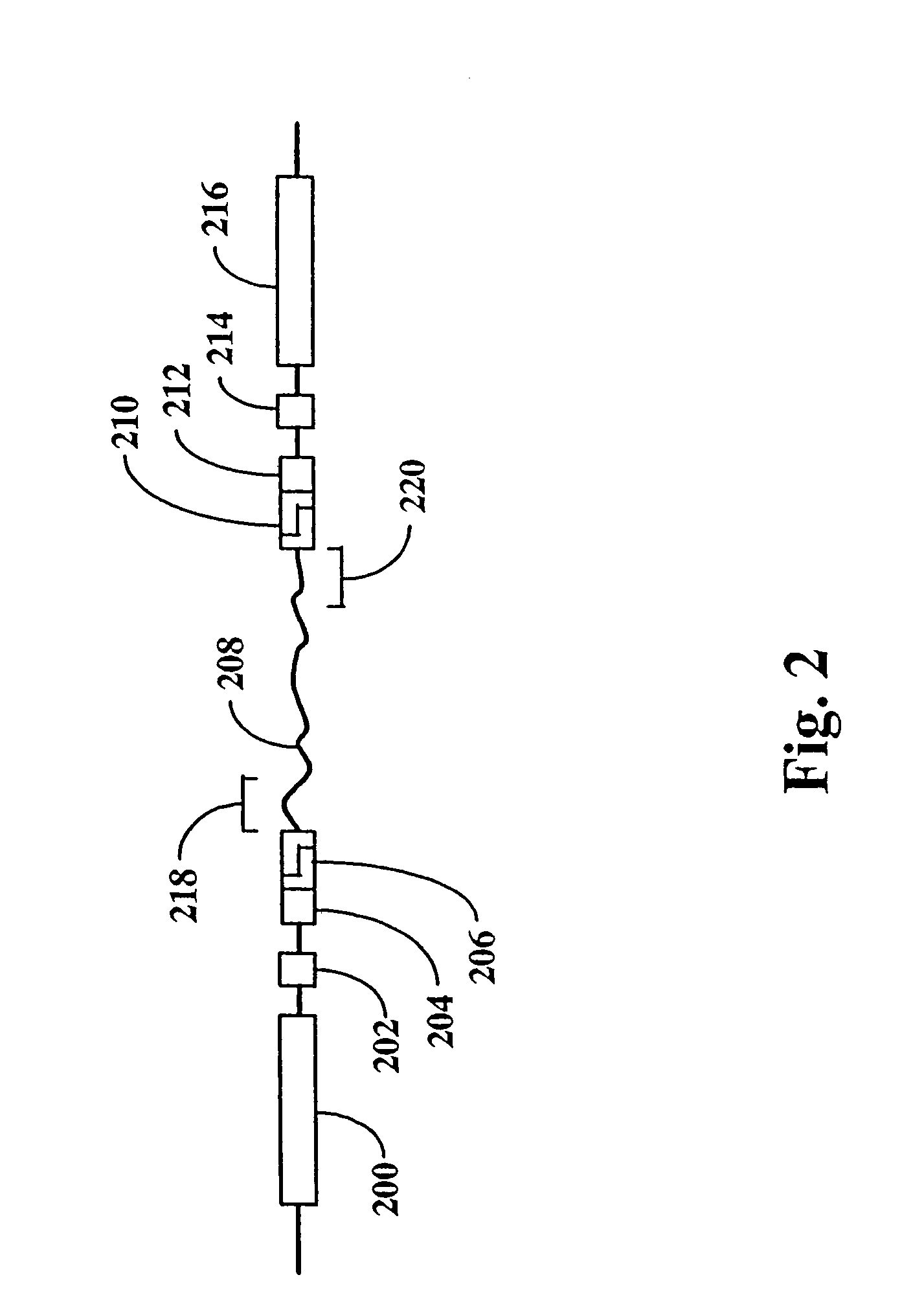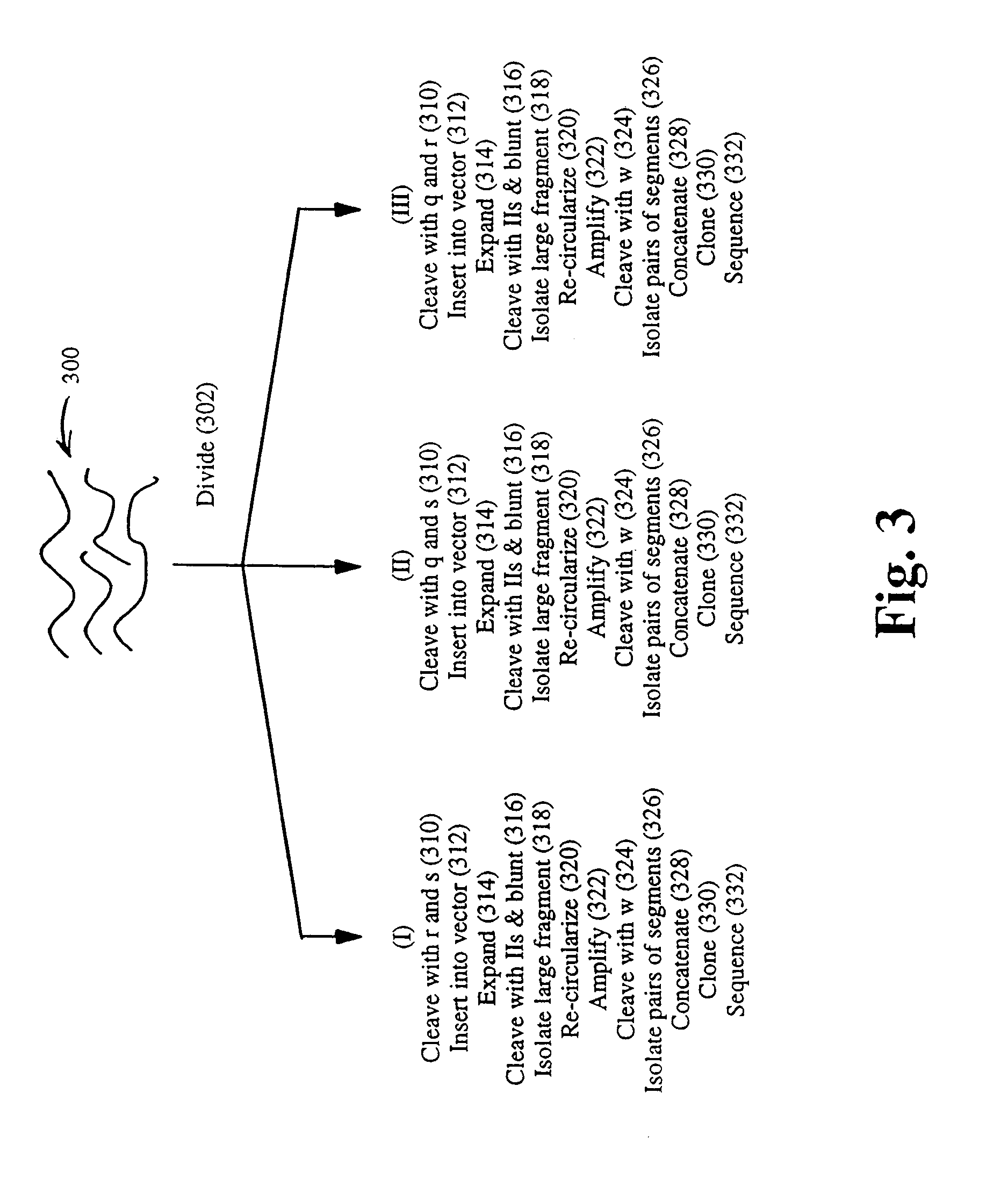Method and compositions for ordering restriction fragments
a technology of restriction fragments and compositions, applied in the field of physical maps of dna, can solve the problems of laborious implementation and difficult approaches to mapping genomic dna, and achieve the effect of high density physical and easy positioning candidate mapping
- Summary
- Abstract
- Description
- Claims
- Application Information
AI Technical Summary
Benefits of technology
Problems solved by technology
Method used
Image
Examples
example 1
Constructing a Physical Map of Yeast Chromosome I with Hind III, Eco RI, and Xba I
[0043]In this example, a physical map of the 230 kilobase yeast chromosome 1 is constructed using pUC19 plasmids modified in accordance with FIG. 2. The chromosome is separately digested to completion with the following combinations of enzymes: Hind III and Eco RI, Hind III and Xba I, and Eco RI and Xba Ito generate three populations of restriction fragments. Fragments from each population are inserted into separate pUC19 plasmids, one for each restriction fragment having different ends. That is, restriction fragments from the Hind III-Eco RI digestion are present in three types, ones with a Hind III-digested end and an Eco RI-digested end (“H-E” fragments), one with only Hind III-digested ends (“H-H” fragments), and ones with only Eco RI-digested fragments (“E-E” fragments). Likewise, restriction fragments from the Hind III-Kba I digestion are present in three types, ones with a Hind III-digested end ...
example 2
Directed Sequencing of Yeast Chromosome 1 Using Restriction Map Sequences as Spaced PCR Primers
[0048]In this example, the 14-mer segments making up the physical map of Example 1 are used to separately amplify by PCR fragments that collectively cover yeast 1 chromosome. The PCR products are inserted into standard M13mp19, or like, sequencing vectors and sequenced in both the forward and reverse directions using conventional protocols. For fragments greater than about 800 basepairs, the sequence information obtained in the first round of sequencing is used to synthesized new sets of primers for the next round of sequencing. Such directed sequencing continues until each fragment is completely sequenced. Based on the map of Example 1, 174 primers are synthesized for 173 PCRs. The total number of sequencing reactions required to cover yeast chromosome 1 depends on the distribution of fragment sizes, and particularly, how many rounds of sequencing are required to cover each fragment: the ...
PUM
 Login to View More
Login to View More Abstract
Description
Claims
Application Information
 Login to View More
Login to View More - R&D
- Intellectual Property
- Life Sciences
- Materials
- Tech Scout
- Unparalleled Data Quality
- Higher Quality Content
- 60% Fewer Hallucinations
Browse by: Latest US Patents, China's latest patents, Technical Efficacy Thesaurus, Application Domain, Technology Topic, Popular Technical Reports.
© 2025 PatSnap. All rights reserved.Legal|Privacy policy|Modern Slavery Act Transparency Statement|Sitemap|About US| Contact US: help@patsnap.com



